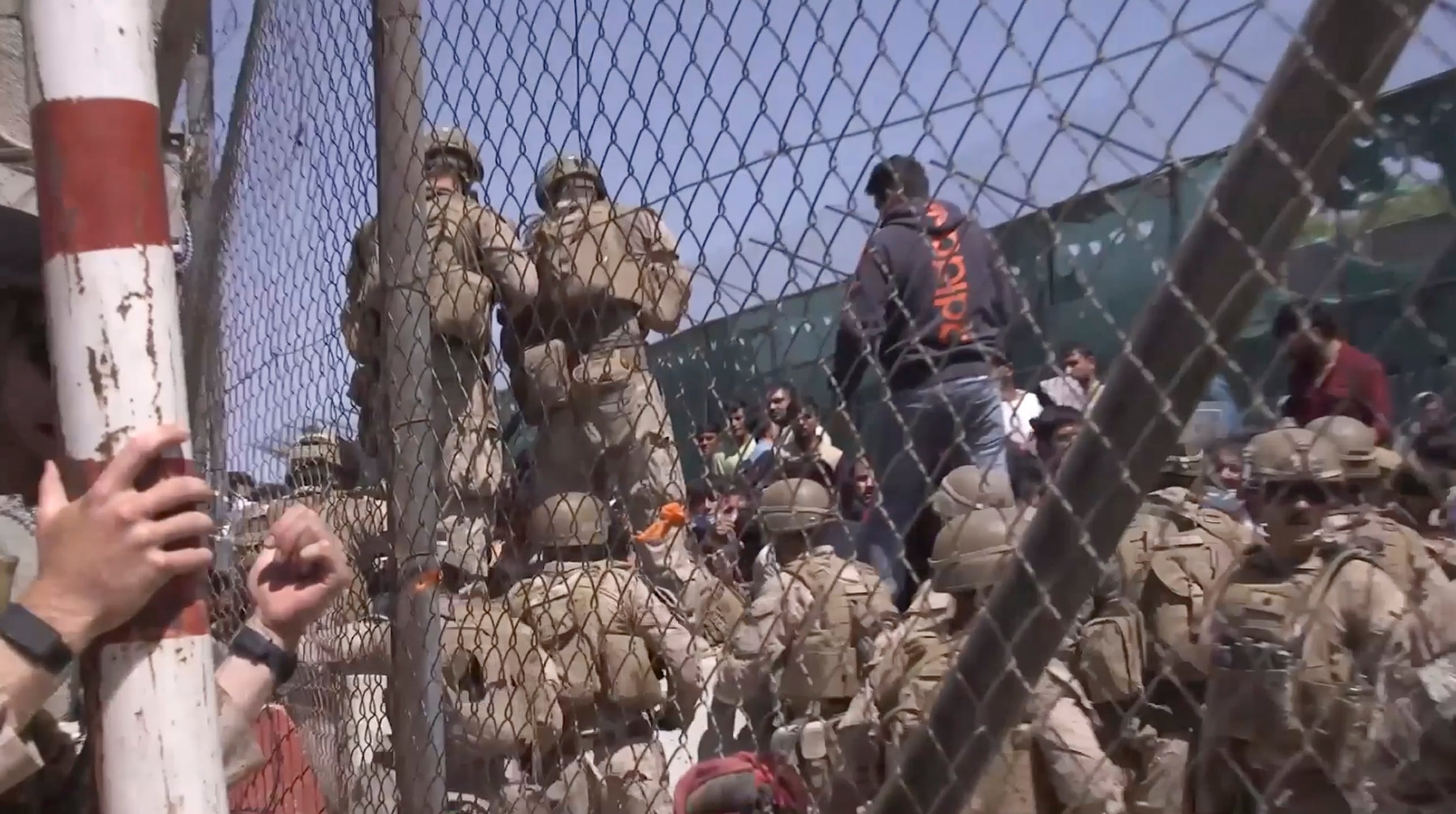The destroyer John S. McCain arrived at Changi Naval Base in Singapore mid-afternoon Monday after a harrowing collision with a commercial tanker that has left 10 crew-members missing and five others wounded.
It is the second major collision involving a U.S. Navy warship attached to U.S. 7th Fleet in recent months, following the June 17 collision involving the destroyer Fitzgerald off the coast of Japan, in which seven sailors died.

Four sailors with non-life threatening injuries were evacuated off the destroyer John S. McCain earlier to a hospital in Singapore Monday morning, according to 7th Fleet officials.
A fifth injured sailor did not require medical attention, the Navy said.
Search and rescue efforts involving U.S. and Singaporean assets near the scene of the collision are ongoing as of 3 p.m. local time, 3 a.m. on the east coast, according to a Navy statement.
“Significant damage to the hull resulted in flooding to nearby compartments, including crew berthing, machinery, and communications rooms,” the command said. ”Damage control efforts by the crew halted further flooding.”
The collision occurred in a highly trafficked area just east of the Malacca Straits, according to Malaysian officials.
“I don't want to speculate how the incident happened, but this area -- it's a busy area, considering the two vessels are about to enter the traffic separation scheme,” said Adm. Datuk Zulkifili Abu Bakarthe, head of the Malaysian Maritime Enforcement Agency, in a Monday press conference.
About 80,000 vessels transit the strait annually through the strait, he said.
The ship suffered heavy flooding in two crew berthings and in a space known as ”shaft alley,” through which runs the shafts that connect to the engines to turn the ship’s propellers, according to an early internal report reviewed by Navy Times.
The collision with the Liberian-flagged merchant vessel Alnic MC happened while the U.S. ship was underway east of Singapore and the Strait of Malacca at 5:24 a.m. local time, according to Navy officials.
The amphibious assault ship America also arrived in Singapore Monday and is moored across from the McCain to provide the stricken ship’s crew with a place to eat and sleep.
Unlike the collision between the destroyer Fitzgerald and the ACX Crystal off Japan in June, much of the crew would be up and preparing to eat breakfast and turn over watch stations at that time.
The Alnic MC is a 600-foot oil and chemical tanker with a gross tonnage of 30,000, according to a Navy release. The tanker is about three times the size of the McCain.
Images circulating on social media show a large hole in McCain that extends below the waterline below the ship’s aft missile deck. The ship’s propulsion was limited as it made its way to Singapore.
Throughout the day the ship had communications, according to a Navy official who spoke on background.
U.S. Osprey and Seahawks responded to help with the search and rescue effort, according to the Navy
Tugs from Singapore, as well as helicopters and a patrol ship from Singapore Navy, the RSS Gallant, assisted McCain.
Singapore and Malaysian assets were also aiding in the search for the missing sailors.
Mounting questions
The details of how the collisions occurred remain unknown. But incidents such as those with the McCain and Fitzgerald incidents are troubling, said Jan van Tol, a retired commander of three war ships who now serves as an analyst with the Center for Strategic and Budgetary Assessments.
“Navy destroyers are remarkably nimble and responsive, including rapid acceleration ability, thus should certainly be able to get out of the way of almost anything approaching ‘too close,’” van Tol said in an email.
“Such close quarters situations should NEVER be allowed to develop without various watchstanders and watchteams being well aware that they are developing,” he said.
It is unknown whether McCain had suffered any kind of casualty to its engineering or steering systems ahead of the collision that would have contributed to the disaster.
The collision was the fourth significant safety incident of 2017 involving a U.S. 7th Fleet ship. In January, the cruiser Antietam ran aground in Tokyo Bay and in May, the cruiser Lake Champlain collided with a Korean fishing boat in the Sea of Japan.

RELATED

The Navy’s top officer tweeted that the safety of McCain’s crew was Navy’s immediate priority.
“Our first priority is determining the safety of the ship and crew,” Adm. John Richardson tweeted. ”As more information is learned, we will share it.”
At-sea collisions had been rare for the U.S. Navy. One of the other most recent was in August 2012, when the Panamanian-flagged oil tanker M/V Otowasan collided with the guided-missile destroyer Porter in the Strait of Hormuz.
President Trump tweeted his support at about 10 p.m. East Coast time on Sunday.
The McCain is named for Arizona Sen. John McCain’s father and grandfather. Earlier, Sen. McCain tweeted his support for the crew.
“Cindy & I are keeping America’s sailors aboard the USS John S McCain in our prayers tonight,” he said.
Shortly after the collision, the Navy’s 7th Fleet tweeted: ”Family Assistance Center established for family members. Phone numbers are On base: 243-1728 INT'L: 011-81-46-816-1728.”
Geoff is the managing editor of Military Times, but he still loves writing stories. He covered Iraq and Afghanistan extensively and was a reporter at the Chicago Tribune. He welcomes any and all kinds of tips at geoffz@militarytimes.com.
David B. Larter was the naval warfare reporter for Defense News.










